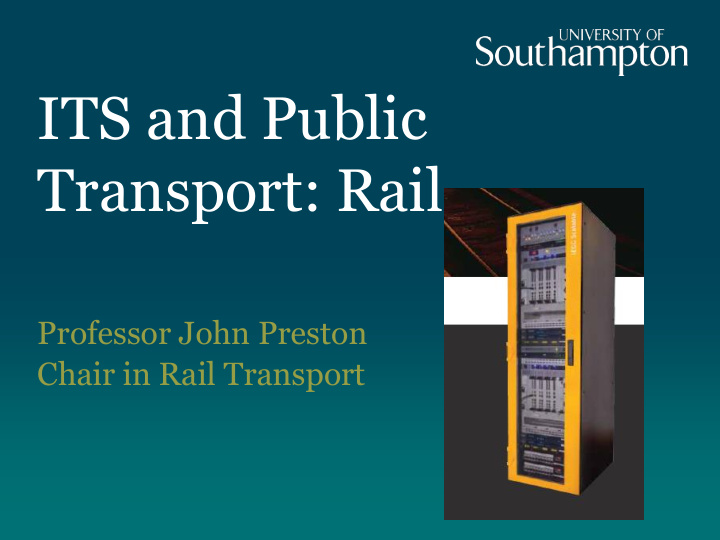



ITS and Public Transport: Rail Professor John Preston Chair in Rail Transport
What can ITS do for railways? • Automatic Train Location • Automatic Train Control/Driver Assistance Systems • Smart Ticketing and Intelligent Pricing • Security and Surveillance • Multimodal, real-time passenger information & navigation systems • On train and station displays • Through Journey Apps 2
Case Study (I) Rail Passenger Needs Don’t use technology Use technology 67% 27% Level 1 • Limited (short-run) effects Technology in terms of passenger and Internet Call centre FTM Use technology Travel centre/ Travel agent Buyers buyers 4% train 20% /someone for info only 15% 14% 34% else 7% Level 2 revenue growth Purchase Don’t use Don’t use Use technology And call And web And web/call Use web/call for info only centre info for info centre centre for technology technology 15% (not web) 4% for info info only for info for info • Greater potential for cost 10% 4% 34% 20% 7% Level 3 Information reductions (e.g. retail Buy in Buy in Buy in Buy on Buy on Buy in Bought/ advance advance advance the day the day advance booked in 15% 10% 4% 4% 12% 8% advance 7% distribution) Level 4 When purchase ticket Buy on the day Buy in Buy in advance train/station advance Travel agent 18% on station /someone else 8% 8% • Initially mitigated by fragmented market and technology proliferation • But internet technology beginning to dominate.
Case Study (II): Capacity Management Systems CUI Measures (%) 07:00 to 09:00 190 Nodes and associated links Min Max Mean Nodes - Existing 0 64 25 - Optimised 0 81 26 Links - Existing 0 51 23 - Optimised 0 73 24 Smarter scheduling could eliminate train waiting times and increase train movements by 26%.
Academic Response to Rail Technical Strategy 2012 Key Issue: Understanding the Human: Machine Interface. Beware the ironies of 5 automation.
Recommend
More recommend